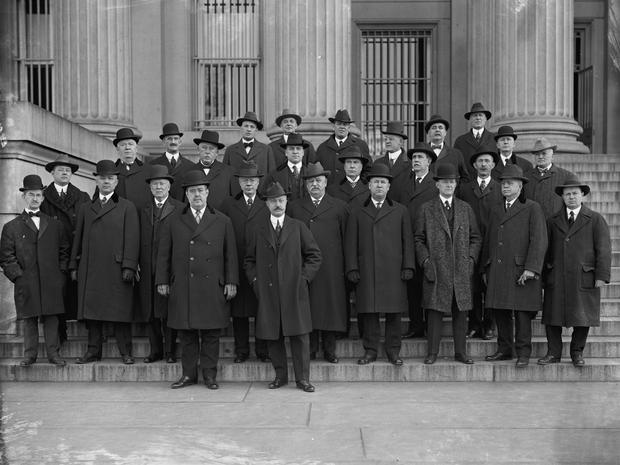The following article on Secret Service history is an excerpt from Mel Ayton’s Hunting the President: Threats, Plots, and Assassination Attempts—From FDR to Obama. It is available for order now from Amazon and Barnes & Noble.
President Roosevelt, the only president elected four times, who led America during the Great Depression and through World War II, was the target of would-be assassins who threatened to bomb his train, blow up the White House, and simply shoot him. Most of these threats against the president were the rantings of mentally ill individuals, drunks, or attention-seekers, but even they can be assassins, and some of the threats were considered extremely dangerous by FDR’s protectors.
Secret Service history began when government officials realized that the president required his own special security detail. Roosevelt received an average of forty thousand letters a month at the White House. Five thousand of those were threatening. According to the chief of the White House Secret Service detail, Michael Reilly, the greatest threat to the president came not from the foreign agents or American traitors, but from people who were just “plain nuts.” Reilly singled out Los Angeles as the most dangerous city for the president, as it had “more nuts per acre than any other American city.”
In 1937, President Roosevelt appointed Frank J. Wilson as Secret Service chief. In the annals of Secret Service history Wilson is sometimes called the “father of the modern Secret Service” because of the way he improved the president’s security after the Japanese attack on Pearl Harbor. Wilson’s security procedures remained the Secret Service standard until the 1980s.
But in Secret Service history, its origins go back to the beginning of the Roosevelt administration. The need for such protection became clear very soon.
Franklin Roosevelt was elected president in November 1932. In the three months he spent as president-elect, FDR was the target of an Italian anarchist and another deranged bomber.
On February 15, 1933, while on a fishing trip with Vincent Astor, Roosevelt gave an impromptu speech at Miami’s Bayfront Park. FDR was in a green Buick convertible, the lead car of a three-car motorcade. With Roosevelt in the Buick were Secret Service agent Gus Gennerich, press aide Marvin H. McIntyre, and Miami mayor R. B. Gauthier.
FDR did not leave his car but stood addressing the crowd. He spoke less than two minutes. In the audience was Chicago mayor Anton Cermak, who stepped over to shake Roosevelt’s hand. Someone then handed Roosevelt a telegram, and as the president reached to take it, an Italian immigrant named Giuseppe Zangara stood on a chair amidst the crowd and opened fire with a nickel-plated .32 caliber double-action revolver. Although the shots missed FDR, a bullet came within two feet of his head. Mayor Cermak was hit along with four others in the crowd. Roosevelt told his Secret Service agents to put Cermak in the presidential car and held the fatally wounded mayor on the way to the hospital.
Zangara pleaded guilty to four counts of assault and was sentenced to eighty years in prison. When Mayor Cermak died on March 6, Zangara was tried a second time. He again pleaded guilty and received the death sentence. During his trial Zangara said he thought he had the “right to kill him. . . . I see Mr. Hoover, I kill him first. Make no difference who go get that job. Run by big money . . . I sorry Roosevelt still alive. . . . I want to shoot Roosevelt.” Zangara’s self-proclaimed mission was to “kill kings and presidents first and next all capitalists.”
Zangara was electrocuted with 230 volts from Raiford Prison’s “Old Sparky” surging through his body at 9:27 a.m. on March 20. His last words were “Viva Italia! Goodbye to all poor people everywhere! Pusha da button! Go ahead, pusha da button.”
 |
This article on Roosevelt assassination attempts is from Mel Ayton’s Hunting the President: Threats, Plots, and Assassination Attempts—From FDR to Obama.. Please use this data for any reference citations. To order this book, please visit its online sales page at Amazon or Barnes & Noble.
You can also buy the book by clicking on the buttons to the left.
Cite This Article
"Secret Service History: Protecting the President" History on the Net© 2000-2024, Salem Media.
April 16, 2024 <https://www.historyonthenet.com/secret-service-history>
More Citation Information.






